


Scotnotes
Series · 18
books · 210-2025
Books in series

#1
Lewis Grassic Gibbon's 'Sunset Song'
1986
Sunset Song regularly appears in lists of favourite Scottish books, and is perhaps the iconic Scottish novel of the first half of the 20th century. Rich in character and detail, and filled with religious, historical and political themes, Sunset Song is a deep, powerful work which rewards close attention and study.
Douglas Young’s Scotnote provides readers with an authoritative analysis of the novel, and an overview of the political and historical background to its creation. This is an ideal guide for school pupils and students studying Sunset Song.

#2
The Poetry of Edwin Morgan
2013
Edwin Morgan (1920 - 2010) is one of the giants of modern poetry. Scotland's national poet from 2004 to his death in 2010, he produced an astonishing range of work, from the playful to the profound. James McGonigal's new Second Edition of this SCOTNOTE covers the entirety of Morgan's work throughout his long and hugely productive life, and is an ideal guide for senior school pupils and students to Morgan's overflowing creativity.

#3
George Douglas Brown's 'The House with the Green Shutters'
1988
The House with the Green Shutters is a dark, provocative novel, shining a harsh and unforgiving light into the inner recesses of small-town Scotland at the turn of the last century. Written as a response to social change, and as an antidote to the sentimentality of the 'Kailyard' school, the author called it "a brutal and bloody work" - although a thread of sly humour runs through the book as well. Iain Crichton Smith's Scotnote explores this post-romantic masterpiece through a precise analysis of themes, characters, structure and language, and is ideal for senior school pupils and students.

#8
The Poetry of Iain Crichton Smith
1993
Iain Crichton Smith was one of the foremost poets of the 20th century, writing in English and Gaelic. His poetry often concerns itself with unsentimental views of life in the Western Highlands and Islands, and his dislike of, and opposition to, dogmatic authority.
John Blackburn’s Scotnote analyses the religious, political and historical themes and patterns of Crichton Smith’s work, and is a suitable guide for senior school pupils and students at all levels.
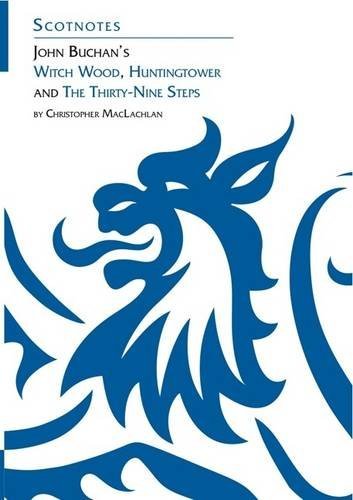
#13
John Buchan's 'Witch Wood', 'Huntingtower' and 'The Thirty-Nine Steps'
2025

#17
Iain Banks' 'The Wasp Factory', 'The Crow Road' and 'Whit'
2001
Iain Banks was one of Scotland's most inventive writers, producing an extraordinary range of work, from family sagas set in present-day Scotland to science fiction spanning vast gulfs of space and time. He enjoyed breaking the arbitrary boundaries of genre, and often created narratives blending “realistic” storylines with fantastical elements.
Alan MacGillivray’s Scotnote provides an overview of Iain Banks’s fiction, and focuses on three novels in particular: The Wasp Factory, a darkly comic piece of Scottish Gothic fiction; The Crow Road, a cross-generational family saga with elements of a detective story; and Whit, following the adventures of an innocent thrust into modern society. Suitable for senior school pupils and students at all levels.

#19
Naomi Mitchison's 'Early in Orcadia', 'The Big House' and 'Travel Light'
2004
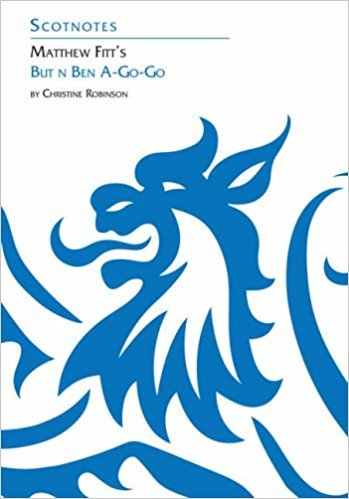
#22
Matthew Fitt's 'But n Ben A-Go-Go'
2005
Matthew Fitt’s extraordinary science-fiction novel But n Ben A-Go-Go is a fast-paced cyberpunk thriller. Like many SF novels it is a conscious comment on contemporary life; with its groundbreaking use of the Scots language, it challenges orthodoxies and raises questions about how we communicate, with the world and with ourselves.
Christine Robinson’s Scotnote explores and explains the novel’s complex plot, its characters and its creative use of language. This guide is suitable for senior school pupils and students at all levels.

#24
Ian Rankin's 'Black and Blue'
2008
Ian Rankin is perhaps the UK's foremost crime writer, best-known for his extensive series of novels set in Edinburgh and featuring Detective Inspector John Rebus. Christopher Nicol's SCOTNOTE study guide examines one of Rankin's most popular works, the award-winning Black & Blue. The complex, multilayered narrative is untangled, the characters studied and the novel's social and psychological undercurrents explored. This guide is suitable for senior school pupils and students at all levels.

#25
[(Rob Roy (1995)
Directed by Michael Caton-Jones)] [Author: David Manderson] published on
2009

#27
Anne Donovan's 'Buddha Da'
210
Anne Donovan’s acclaimed debut novel Buddha Da is a contemporary story of a Glasgow house-painter’s conversion to Buddhism, and the impact this has on his life and the lives of his family. Seen from the perspective of three family members, using Glaswegian Scots throughout, the book addresses complex issues – social, psychological and philosophical – in a deceptively simple fashion.
Christopher Nicol’s Scotnote examines the novel, its tripartite structure, its characters and its language, and addresses the larger questions of philosophy and spirituality that it raises. These notes are suitable for senior school pupils and students at all levels.

#30
The Poetry of Sorley MacLean
2011
Along with his contemporaries Edward Morgan and Hugh MacDiarmid, Sorley MacLean is recognised as one of the most important Scottish poets of the 20th century. This book offers a detailed study of MacLean's poems, providing insight into the context of his work.

#34
The Short Stories of George Mackay Brown
2014
George Mackay Brown’s work is full of a deeply evocative sense of place and history; his work shows a deep respect for, and love of the natural world, but he is always conscious that there is a spiritual, supernatural dimension to reality. In his short stories especially, there is always the possibility of grace for his characters.
Linden Bicket’s Scotnote examines ten of George Mackay Brown’s short stories, from across his long writing career, and explores their themes and characters.

#35
Ena Lamont Stewart's 'Men Should Weep'
2015
Ena Lamont Stewart (1912 - 2006) had a keen sense of the appalling poverty and deprivation suffered by the residents of Glasgow's slum tenements in the first half of the twentieth century. A member of the radical group of young writers and artists gathered around Glasgow's Unity Theatre in the immediate aftermath of the Second World War, she is today most noted for her play, Men Should Weep, set in the East End of Glasgow in the 1930s.
John Hodgart's Scotnote explores how the play deals with issues of poverty and sexual and social inequality. This study guide examines the roles of the individual characters and outlines the major themes in an approachable and accessible way, and also explores issues of set, dramatic technique and staging. This guide is suitable for senior school pupils and students at all levels.
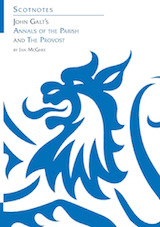
#38
John Galt’s 'Annals of the Parish' & 'The Provost'
2018
John Galt (1779 – 1839) was a contemporary of Sir Walter Scott and Jane Austen, and a friend and biographer of Lord Byron. His writings are full of acute observation, penetrating psychological insight, rich Scots language and great good humour. This SCOTNOTE examines two key novels by Galt, which chronicle the changes in Scottish society in the later eighteenth and early nineteenth centuries.
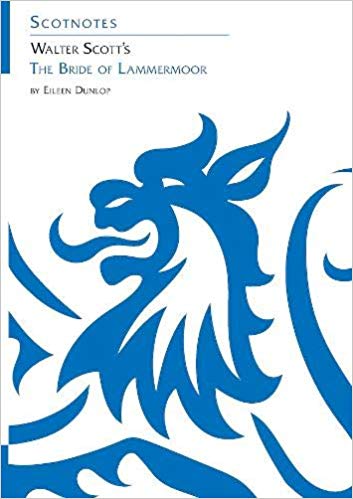
#39
Walter Scott’s 'The Bride of Lammermoor'
2019
Set in the aftermath of the 1707 Union of the Parliaments, Sir Walter Scott’s romantic tragedy The Bride of Lammermoor (1819) conveys the anxiety of a fractured Scottish society through the ill-fated romance of two young lovers, Edgar and Lucy. With its heady gothic mixture of history, fiction, humour, romance, and the supernatural, The Bride of Lammermoor is both intriguing and entertaining, and an ideal text for further study.
Eileen Dunlop’s SCOTNOTE explores and explains the historical, social and political background of this influential novel, and is suitable for senior school pupils and undergraduate students.
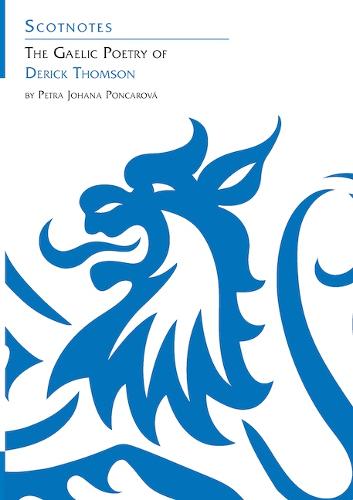
#40
The Gaelic Poetry of Derick Thomson
2020
Derick Thomson - Ruaraidh MacThomais - was one of the most prolific and influential Scottish Gaelic poets of the twentieth century. His work pushed forward the boundaries of Gaelic poetry, taking it from its traditional heartlands in the Highlands and Islands to Scotland's Lowland cities, Glasgow in particular. He was the first poet to use free verse consistently in Gaelic, and his poems, both in terms of form and content, had a profound influence on following generations of Gaelic writers.
Petra Johana Poncarovás SCOTNOTE examines Thomson's life and work, and his historical, political, cultural and personal influences. It is an ideal introduction for senior school pupils and students of all ages.
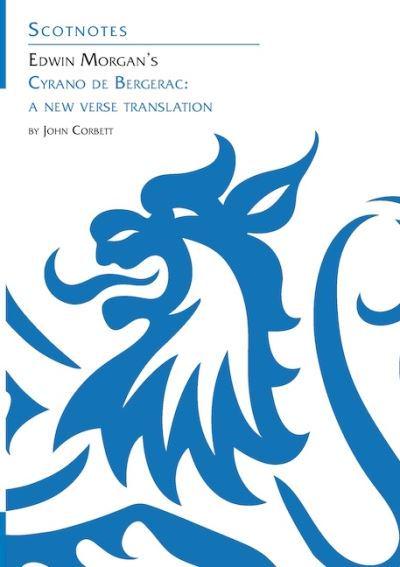
#41
Edwin Morgan’s 'Cyrano de Bergerac'
a new verse translation
2020
Edwin Morgan’s Glasgow-based Scots translation of Edmond Rostand’s Cyrano de Bergerac is one of the most successful productions in modern Scottish theatre. Fresh, clever and dynamic, Morgan’s refashioning of the play establishes a cultural bond between the classic French play and Scotland’s own dramatic and literary heritage.
John Corbett’s SCOTNOTE provides a succinct background to Edmond Rostand and his original play ⃛ first performed in Paris, 1897 ⃛ as well as to Edwin Morgan and his 1992 Scots verse translation, and is a perfect introduction for senior school pupils and students of all ages.
Authors

Moira Burgess
Author · 1 book
Moira Burgess is a novelist and literary historian, born in Campbeltown, Argyll, and now living in Glasgow. She has always seen novels and short stories as the heart of her writing.
Alan MacGillivray
Author · 1 book
Alan MacGillivray is a specialist in Scottish Literature who has lectured at the University of Strathclyde, Glasgow, and is a former President of the Association for Scottish Literary Studies.

Linden Bicket
Author · 1 book
Linden Bicket is Lecturer in Literature and Religion at the School of Divinity at the University of Edinburgh. She has published widely on issues of faith, belief and scepticism in modern Scottish writing, and her most recent books are (with Alison Jack and Emma Dymock) Scottish Religious Poetry from the Sixth Century to the Present (Saint Andrew's Press, 2024); with Kirsteen McCue) a centenary edition of George Mackay Brown's An Orkney Tapestry (Birlinn, 2021); George Mackay Brown and the Scottish Catholic Imagination (Edinburgh University Press, 2017); and (with Douglas Gifford) The Fiction of Robin Jenkins: Some Kind of Grace (Brill, 2017).
Ian McGhee
Author · 1 book
Ian McGhee was a civil servant and pursued his lifelong love of John Galt after retirement by studying Scottish Literature at Glasgow University where he obtained an MA and an MPhil based on Galt's relations with North America. He is Secretary of the John Galt Society.
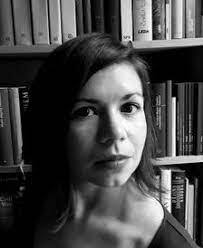
Petra Johana Poncarová
Author · 1 book
Petra Johana Poncarová is based at Charles University, Prague. She is currently the deputy convenor for europe of the International Association for the study of Scottish Literatures, co-director of Ionad Eòghainn MhicLachlain, the National Centre for Gaelic Translation, and international affiliated member of The Scottish Revival Network. She is the author of the Scotnote Study Guide. The Gaelic Poetry of Derick Thomson, (2020) and has published book chapters and articles on Derick Thomson, Ruaraidh Erskine of Mar, Tormod Caimbeul and Sorley Maclean. She also translates directly from Gaelic into Czech. Her monograph, Derick Thomson and the Gaelic Revival is forthcoming from Edinburgh University Press (2022).
John Blackburn
Author · 1 book
Librarian Note: There is more than one author in the Goodreads database with this name. This profile may contain books from multiple authors of this name.

John Corbett
Author · 1 book
John Corbett is a Capes International Fellow and Visiting Professor at the University of Sao Paulo. He was previously a Professor and Head of the English Department at the University of Macao, and before that a Professor at the University of Glasgow, where he served as Head of the Department of English Language. He has published widely on diverse topics, including Scottish literature and the Scots language, literary translation, intercultural language education, and corpus linguistics. He is an Honorary Vice-President of the Association for Scottish Literary Studies and he has twice chaired the MLA Scottish Literature Forum.
Emma Dymock
Author · 1 book
Emma Dymock achieved her Ph.D. at the University of Edinburgh in 2008. Her primary research interest is modern Scottish Gaelic. She has worked with the poet and scholar Christopher Whyte in preparing the poems of Sorley MacLean, published in 2011. Her research in 20th century Gaelic poetry has led her to explore the field of 20th century Scottish literature more widely. She has also attempted to bring the works of Douglas Young more firmly into focus, beginning with the publication of Naething Dauntit: The Collected Poems of Douglas Young, in 2016. Dymock's other research interests include Scottish Gaelic drama and 20th century Irish poetry. She is particularly interested in modern representations of myth, symbolism and socio-political contexts.
Eileen Dunlop
Author · 12 books
Eileen Dunlop has lived in Scotland all her life. Born in Alloa, 13 October 1938, she was educated at Alloa Academy and Moray House College, Edinburgh.
